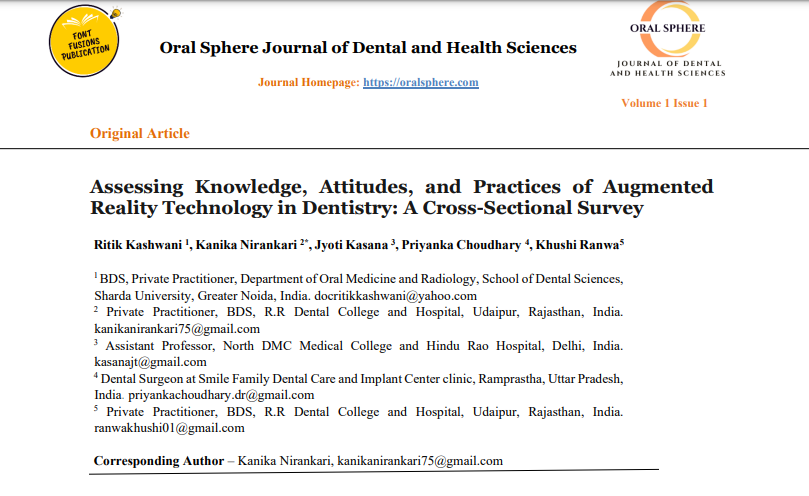Abstract
Introduction:
Augmented Reality (AR) technology is increasingly recognized for its potential to enhance various aspects of dental practice, including treatment planning, patient education, and training. Despite this potential, the understanding of dental professionals' knowledge, attitudes, and practices regarding AR technology remains underexplored. This study aims to assess the awareness, perceived benefits, and actual use of AR technology among dental professionals and students.
Methods:
A cross-sectional survey was conducted involving 132 participants, including dental students, private practitioners, and academic faculty. A structured questionnaire was administered both online and in person, consisting of two sections: the Knowledge Assessment, which evaluated participants' understanding of AR and its applications in dentistry, and the Practices Assessment, which assessed their experiences with AR technology. Descriptive statistics were employed to analyse the survey responses.
Results:
The Knowledge Assessment indicated that 69.7% of participants were aware of AR technology, with 65.9% acknowledging its potential benefits in dental training and education. In the Practices Assessment, 57.6% of respondents reported never having used AR in their practice or education, while 67.4% expressed a desire to incorporate AR technology in the future. Proficiency ratings revealed that 44.7% of participants rated themselves as moderately proficient (3 out of 5) in using AR applications, with only 16.7% rating their proficiency as high (4 or 5 out of 5).
Conclusion:
The findings suggest that while dental professionals and students exhibit significant awareness of AR technology and its benefits, actual usage remains limited. A notable interest in integrating AR into future practice and education was expressed; however, there is a clear need for further training and resources to enhance proficiency and confidence in using AR tools. These results underscore the importance of increasing access to AR technologies and educational initiatives to facilitate their adoption in modern dentistry.

This work is licensed under a Creative Commons Attribution-NonCommercial-NoDerivatives 4.0 International License.
Copyright (c) 2024 Oral Sphere Journal of Dental and Health Sciences





